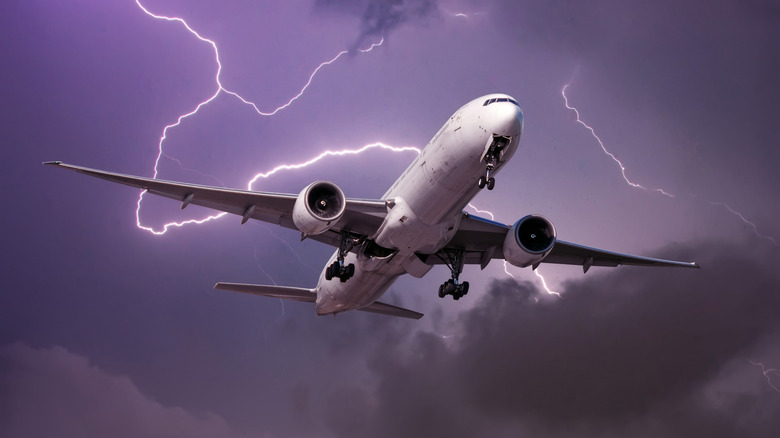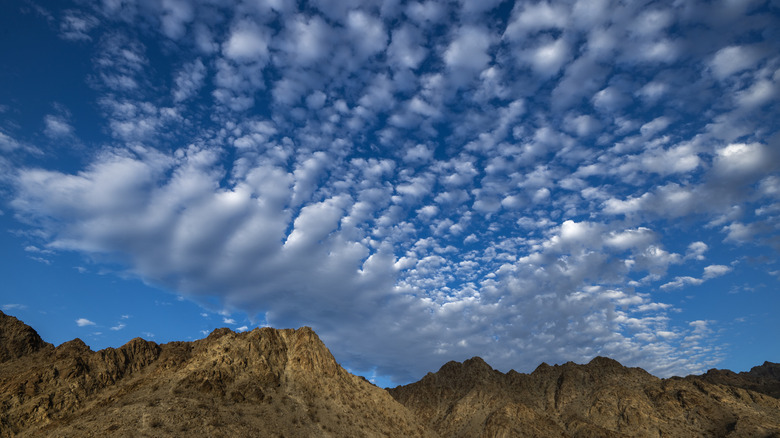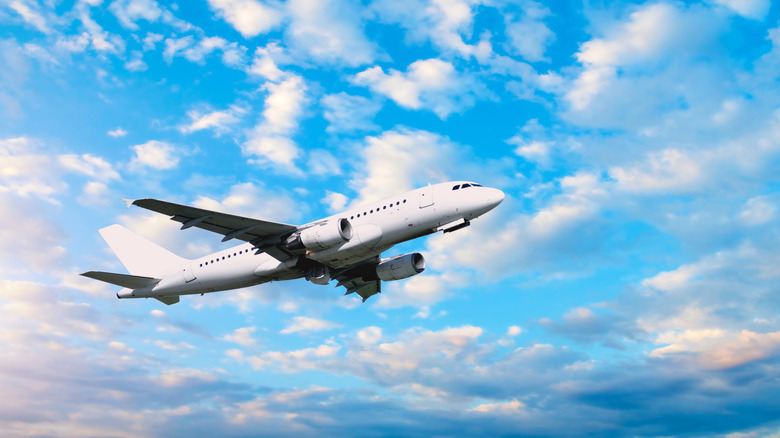3 Common Causes Of Airplane Turbulence
Nobody likes to experience turbulence on their flight. When your airplane begins to shake violently or even has a sudden drop, it can be alarming. Some people have severe anxiety regarding airplane turbulence. It is easy to see why, as unexpected turbulence has led to injuries, deaths, and even plane crashes.
Turbulence itself is caused by disturbances in the air. When an airplane hits this rougher air, whether expected or unexpectedly, it causes the violent shaking. Unexpected turbulence is referred to as clear air turbulence, or CAT. It means it has happened without warning, and that is what is primarily responsible for injuries, as passengers and crew aren't wearing seatbelts and are unprepared.
There is evidence to suggest that flight turbulence is getting worse due to climate change. That being said, today we know a great deal about our weather patterns and the three most common causes of airplane turbulence. These three causes are mountain wave turbulence, jet streams, and thunderstorms.
The three most common causes of turbulence
When air hits the mountains, its natural path is disrupted. This can cause it to build up like an ocean wave and then push upward. This phenomenon is referred to as mountain wave turbulence. Mountain waves develop on the downwind side of the mountain. It is very difficult to predict and detect these bursts of turbulence. Sometimes, though, there is a visual cue. These air waves can create altocumulus standing lenticular clouds, which can look like linear, wave-like clouds near the mountains.
Turbulence from jet streams is caused when an airplane moves from an area with higher wind speeds to an area with lower wind speeds. Often, the location of this type of turbulence is well-known, such as the Polar Jet Stream or the Equatorial Jet Stream. Pilots use weather charts to track the locations of jet streams and incorporate that information into their flight. Earth is not the only planet with jet streams; an ultra-powerful jet stream has been spotted on Jupiter.
The way thunderstorms create turbulence is well-known to most people. Feeling the wind from a storm shake your car, or hearing it tear through the trees outside, gives a good impression of how storms can affect airplanes. However, thunderstorms can also push air outward as they form, which will cause turbulence further away from the actual storm itself.
Incidents caused by turbulence
Though flying is still safer than driving, there have been incidents of turbulence severely disrupting flights. In December of 1997, a Boeing 747 over the Pacific Ocean hit rough turbulence created by jet streams. The weather forecast the pilot was operating off of did not give any indication that this turbulence would be there. This resulted in multiple injuries and one passenger losing their life. Everyone who got hurt, and the one passenger who died, were not wearing seatbelts.
In March of 1966, a Boeing 707 left Tokyo's International Airport. While flying over Mount Fuji, the plane hit powerful mountain wave turbulence. The plane was torn apart and crashed, killing all passengers and crew members. An approved request had been made to fly closer to Mount Fuji to give the passengers a better view, which possibly put this aircraft in greater than normal danger.
In June of 2025, a Boeing 737 was flying from Berlin to Milan. It encountered turbulence caused by a thunderstorm. The storm was bad enough to divert the path of the flight and force an unexpected landing in southern Germany. Three passengers had to be taken to a hospital with injuries sustained from the turbulence. This has led to conversations about stricter seatbelt rules on airplanes.


